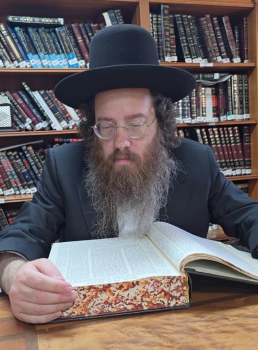What is Shmura Matza?
Question
Answer
Hi!
There are three types of flour that can theoretically be used for
baking matzot. In order of preference, they are:
- Flour from wheat that has been guarded from the time of harvesting (shmura m’shat k’tzira)
- Flour from wheat that has been guarded from the time of grinding (shmura m’shat techina),
- Any other flour that is ultimately kosher for Pesach. This type of flour is referred to as guarded from the time of kneading (shmura m’shat lisha). (1)
In ancient times, most people resorted to the third, least preferred option, and made their matza with flour they purchased in a local store.(2) Nowadays, however, it is almost impossible to find kosher for Pesach flour that is anything but the ideal shmura m’shat k’tzira. Indeed, it is forbidden to purchase just “any other flour.” This is because all store bought flour nowadays (that is not specially certified for Pesach) is actually chametz due to the washing and bleaching process of commercially sold wheat and flour. (3) So too, when it comes to the matzot that are first eaten at the Seder, which is a mitzva of the Torah, one must use matza from the first category, made with flour that was shmura m’shat k’tzira. One must examine boxes of matza very carefully, as most mass-produced matza are from the third category mentioned above (at best), and should not be used at the Seder.
It is considered ideal to bake all the matzot that one will eat over the course of Pesach on Erev Pesach in the afternoon. In fact, this was normative practice until the 14th century though very few people do so today. Doing so is intended to recall the Korban Pesach which was offered on Erev Pesach in the afternoon. So too, those who bake matzot at this time wear their Yom Tov clothes and recite Hallel when doing so, just like those who offered the Korban Pesach would wear their Yom Tov clothes and recite Hallel, as well. Common custom nowadays is to allow baking matzot for Pesach at any time, even many months before Pesach, as long as one does so with the explicit intention that they are to be used on Pesach. (4) So too, in the past, matza was regularly baked on Chol Hamoed, if needed. Nowadays, however, it is virtually unheard of to bake matzot on Chol Hamoed Pesach. (5)
Although today our matzot are thin and hard, they used to be made thick and soft, and this remains the custom of some Sephardim today. There are two reasons why the custom of making thick and soft matzot ceased. One reason was in order to better ensure that the dough would not become chametz, as thicker dough becomes chametz faster than thin dough. The other reason was because some felt that thick matza does not comply with the requirement of “lechem oni” – poor man’s bread. (6) It also suggested that the switch to thin matzot was in order to better ensure the freshness of the matzah, as thick matza goes bad quickly.(7)
It is interesting to note, that although matza is always made within 18 minutes of the water being poured into the flour, this short amount of time may not be truly required. This is because dough that is continuously being kneaded or otherwise handled will never become chametz, even after many hours. The idea of dough becoming chametz within 18 minutes refers only to dough that is left sitting idly. Nevertheless, in order to comply with all possible concerns that can arise in the course of the baking, it is a universal custom for the matza baking process to take no more than 18 minutes. (8) So too, it is actually a dispute when dough that has been left idle becomes chametz, with opinions ranging from 18 minutes, 22.5 minutes, or even 72 minutes. Here again, however, in order to comply with even the strictest view, dough left idle is considered to be chametz after 18 minutes. (9)
Chag Kasher V'sameach!
Source
[1]
OC 453:4.
[2] Minhagei Yisrael (Sperber), Vol. 1 p. 92.
[3] Mishna Berura 453:24.
[4] Shulchan Aruch Harav, OC 458:2,3; Mishna Berura 458:1,3; Kinyan Torah 7:38.
[5] Tur, OC 458; OC 458:1; Mishna Berura 458:3.
[6] Tur, OC 460; Rema, OC 460:4.
[7] Aruch Hashulchan, OC 458:3.
[8] Pesachim 48b; Rambam, Hilchot Chametz U’matza 5:13; OC 459:2.
[9] See here for an extensive discussion on this issue: http://www.hakirah.org/Vol18Vaynman.pdf
